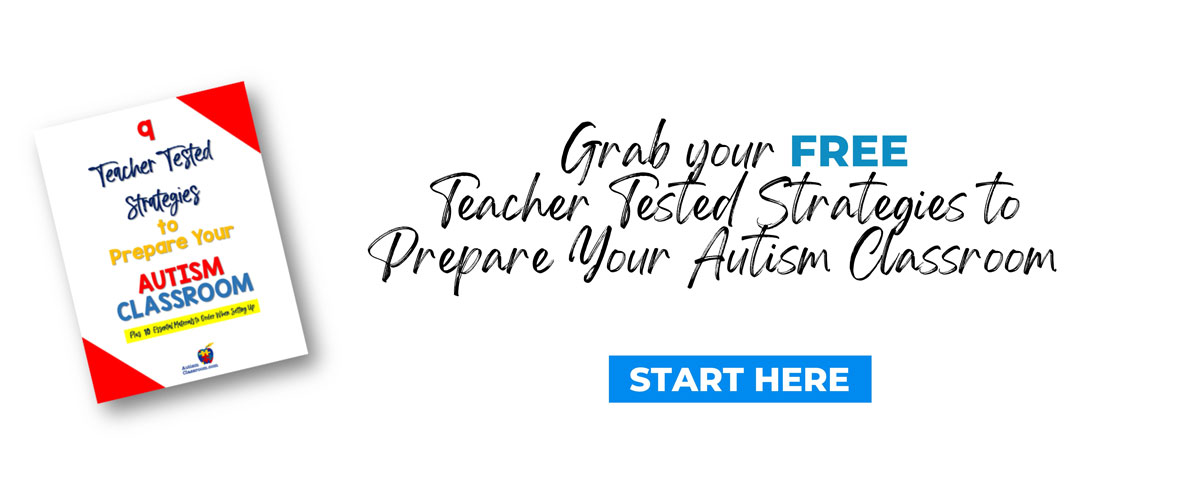This page provides tips for parents, family members, or in-home service provider instruction in the home for extra support or for those offering home school for autism. (c)AutismClassroom.com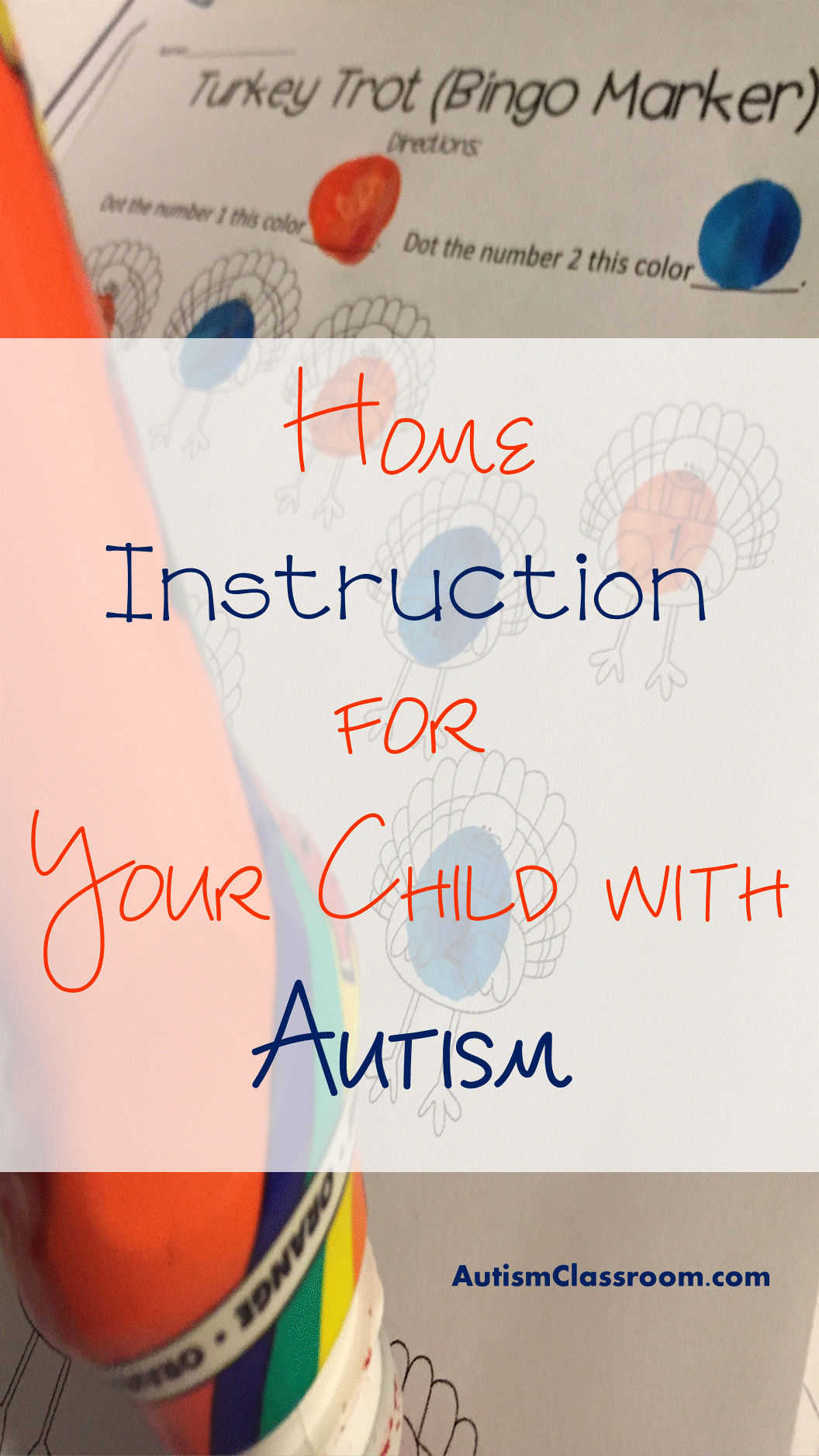
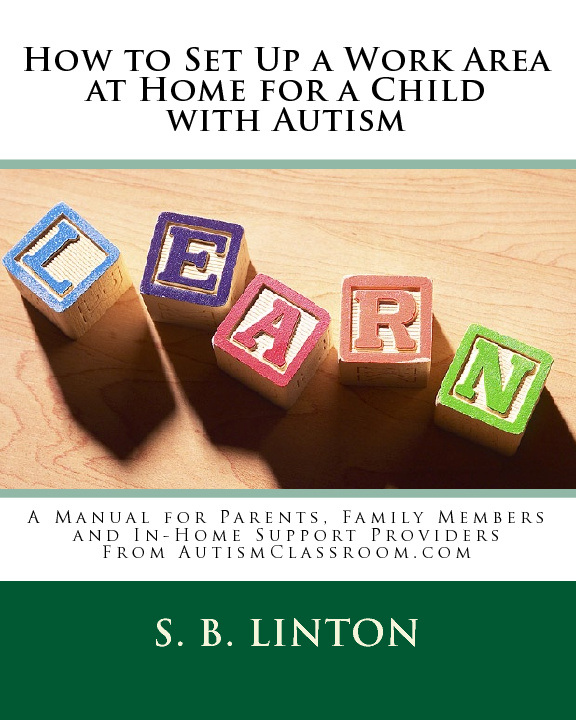
Compile a Variety of Materials
· zipper baggies
· permanent markers
· Velcro ™
· heavy card stock paper
· binders or 2-pocket folders
· clear duct tape
· clear packing tape (to use as a quick laminator) or self-stick laminating sheets
· paper
· index cards
· several clear containers with lids
· appropriate sized chair and table
· a filing cabinet or bookshelf or large container
Utilize Schedules
There are many types of schedules that can be used with children with autism. Parents and family members will want to understand the usefulness of schedules and how they can help to make the process of completing work tasks easier for an individual with autism. In fact, schedules help the process of completing work tasks for all of us, as many of us use checklists, scheduled lunch breaks at work, to do lists, scheduled days off, etc. Schedules help make routines more predictable and manageable for most individuals with autism.
Develop a Method for Tracking Progress
Data sheets are needed to record progress. There are various types of data sheets which can be used for any given skill you are working on. It will be important to locate the type of data sheet that tracks the skill you are working on. The type of information you are looking for should help determine the correct progress tracking sheet. Below are so standard types of data.
Types of Data
· Frequency- number of times a behavior occurs
· Duration- amount of time a behavior occurs
· Latency- amount of time between the start of the opportunity and the behavior
· Percent- number of occurrences out of the number of opportunities
· Intensity- physical force or magnitude of response
· Time Sample- observation period divided into intervals
· Permanent Product- count of the behavior by observing the product
· Interval Recording- recording behavior in intervals
Create Self-Monitored Work Systems
The idea behind the self-monitored tasks is that during these tasks, the child will work on structured tasks or structured chores by themselves (eventually) from start to finish. At first they may need much guidance from you, but try to provide guidance without words. If you want them to do these tasks on their own, using words could cause them to become dependent on your words to complete the task. Typically, the tasks should be set up to be completed in a left to right or top to bottom sequence (www.TEACCH.com). After completing work tasks, the child will need a place to store their finished work. Our page on Work Systems has some more ideas, however, here are a few typical types of basic skills the child may be working on, but not limited to:
-putting counting bears into a container
-using a pincer grasp to take clothespins off of a container
-matching pairs of socks
-placing the picture with the beginning letter
-folding clothes
-sorting recycling
-placing clothes pins on stickers on an index card
(See this printable Pre-Academic Skills Re-usable binder.)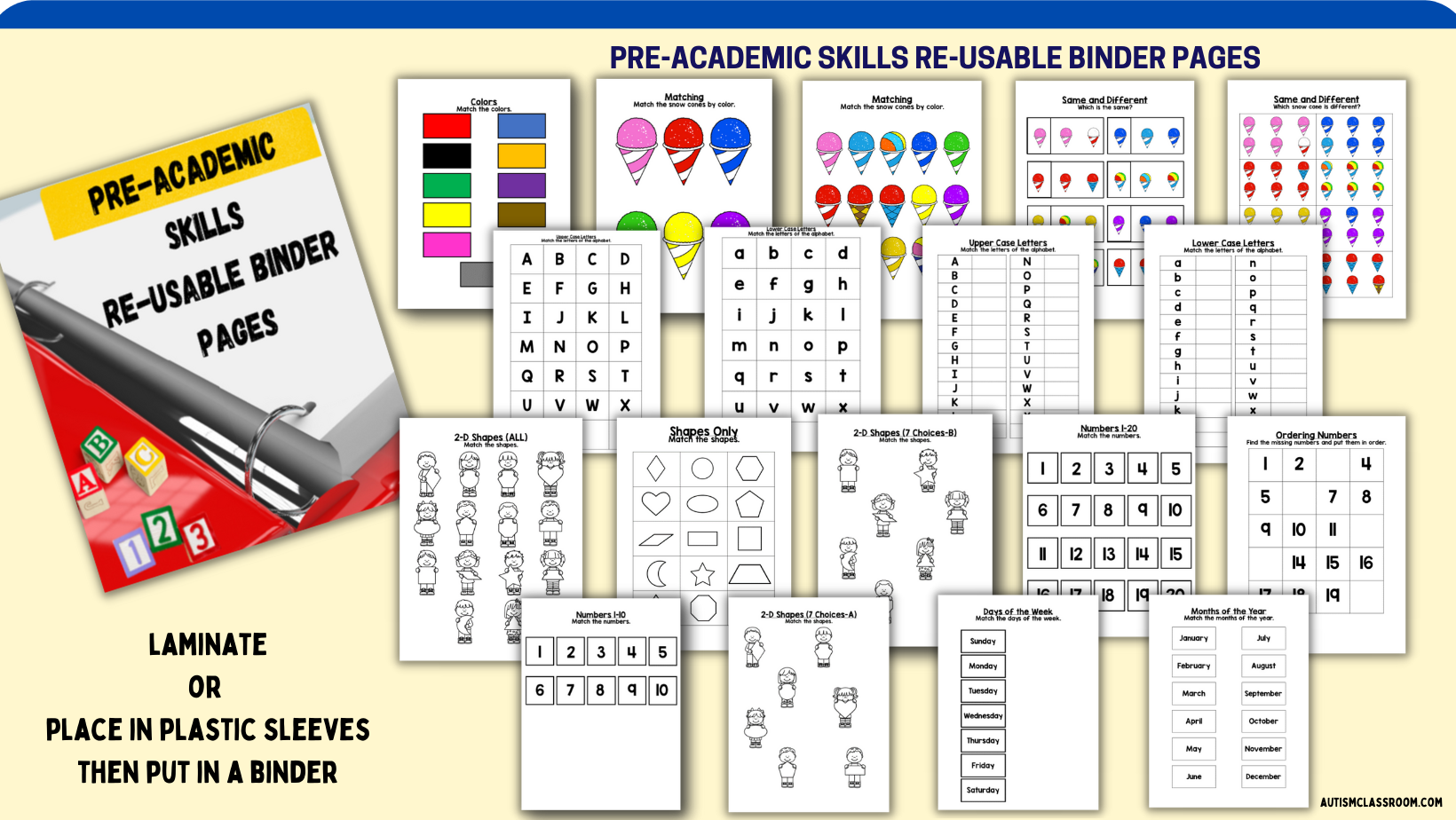
Teach Adult Directed Skills or Tasks
These will be those tasks in which you are teaching your child a new skill. These tasks will be identified by you based on your child’s needs. First take a look at where your child is currently functioning. Use assessment data from the school setting or take your own inventory of your child’s skills. Simply write a list of 10-12 specific skills that your child has. Then, write another list of 10-12 specific skills you would like for your child to learn. Next, take a look at a developmental milestones chart to see what is appropriate for (1) your child’s age and (2) your child’s developmental level.
Create Your Own Teaching Plan
The teaching plan should include the following elements:
· The Skill to be Learned
· Materials Needed
· Plan to Make the Materials
· Ideas for Data Collection
· Teaching Technique to be Used
· Motivator/Preferred Item/Reinforcer
(See this printable e-book for parents, family and in-home providers at the Autism Classroom Shop.)
Or get the physcial book here.
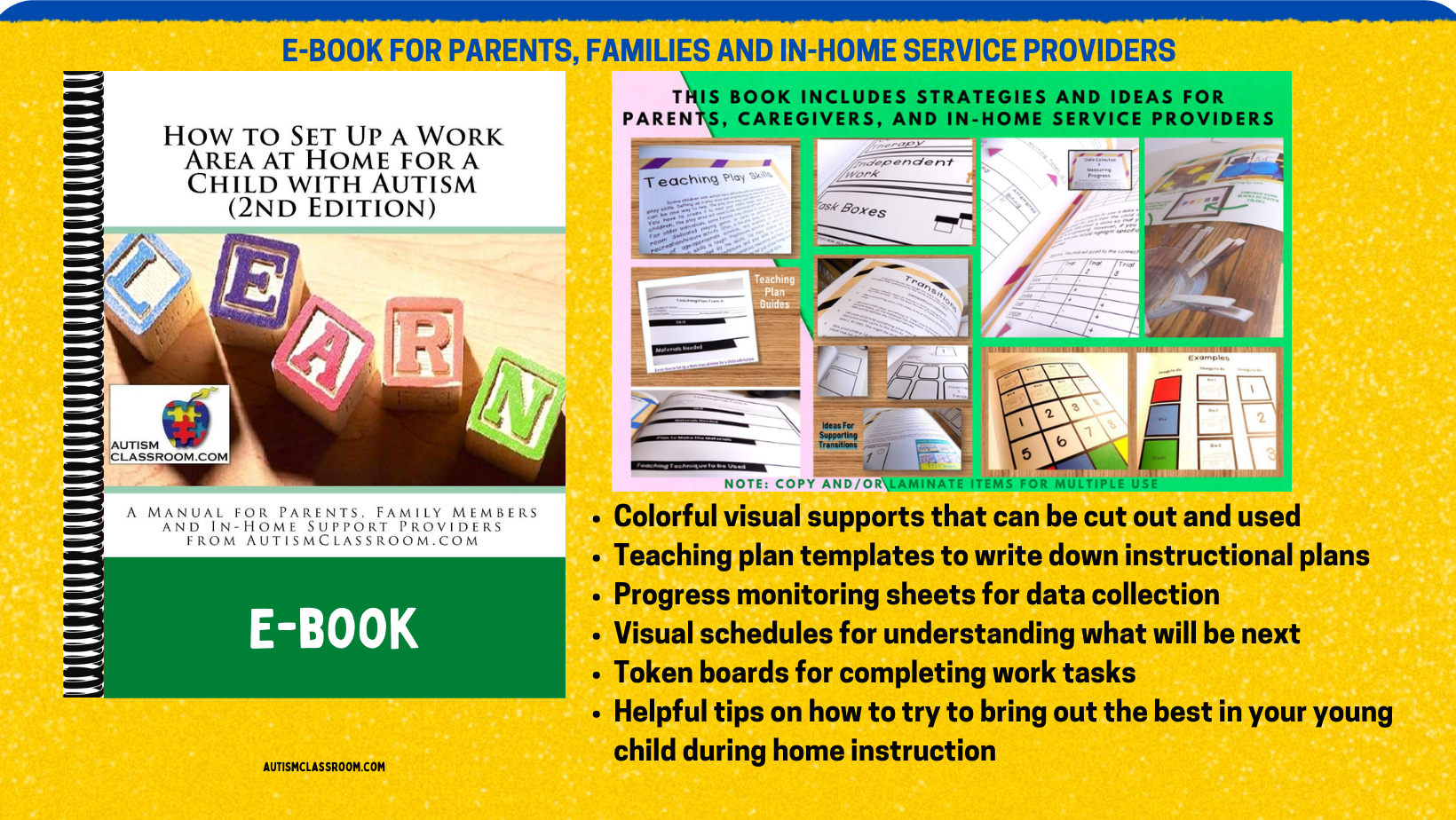
Organize Your Materials
· Zipper-type baggies
· Label each baggie
· Use a box of selected reinforcers that your child is only allowed access to during work times
· Limit distractions in work areas
Teach Basic Skills by Starting Small, then Building Up
Present 1 or 2 items at a time. For example, if you are teaching colors or numbers, don’t teach eight colors at once. Start with one or two until your child masters the objectives/goals, then move on to another color, then another, etc. Clear the table off, except for what you are trying to get your child to focus on. When you first start, make the correct answer stand out (Ex. If teaching the shape “circle,” try using a large circle and a small square. Gradually, switch to shapes that are the same size.) When starting to teach concepts or attributes, be sure to keep all elements of the materials the same except for the attribute you are working on (Ex. If you are teaching colors, have items which are exactly the same except for the color. If you are teaching shapes, have shapes which are exactly the same color, but differ only in shape.) Teach more difficult vocabulary identification tasks, by first having your child match the picture, number or word to the exact same picture number or word. Next, you provide the vocabulary for what they are matching as you give them the picture (Ex. “match dog,” “match book,” “match number 2”). Gradually, begin to ask them to give you the picture, number or word (Ex. “give dog,” “give book,” “give number 2.”) please note that without a highly motivating item, you may have a difficult time getting your child to do the task.
Directly Teach Play Skills
· Play is not work! Try not to “test” your child while playing.
· Remember you will have to teach play skills. They do not come naturally for many children with autism.
· Teach the play skills 1:1 first, then incorporate them into a group setting (Moyes, 1997).
· Use age appropriate games and toys to the extent possible.
· Find a way to make the game or activity “do-able” for him or her.
· Emphasize “my turn” and “your turn.”
· Over exaggerate movements, sounds and facial expressions.
· Have fun. Your child should want to come to this play area. If you are not having fun, they are probably not having fun.
Teach Self-Help Skills Routinely and Methodically
These ideas for teaching toileting skills are from Autism Classroom.com’s book How to Set U p a Work Area at Home for a Child with Autism.
1. Have a plan and work on one step at a time. 2. Use visual supports (check the TEACCH.com website for ideas for toilet training.) 3. Use backward chaining (physical guidance, then reinforce the last step.) 4. Use video modeling (Ex. Model from the child’s point of view. There are ways to be creative without actually showing the act of someone using the bathroom. For example, there are people who use squirt bottles and chocolate candy bars to imitate the actual act of using the bathroom.) 5. Remember there are a few important steps for the toileting process:
· Sits on toilet
· Stays dry for an extended period of time
· Urinates in toilet
· Wipes self
· Time toilet trained
· Requests use of the bathroom
· Independent
Find Ways to Get Your Child to Respond to Requests Consistently
If you have a specific behavior plan, then follow that. Otherwise, try this technique for most, not all daily instructions: Use only a few words to make a request. Give your child your request only 2 times, then, on the third request follow through with assistance in completing the task.
Make Transitions Easier
One thing that could be done to make transitions easier is to have something your child really likes at the place where they have to transition to each time. Also, letting your child carry something or “help” you to the next activity may help. Additionally, it may help to let your child hold something when they are sitting at the activity.
You can do this. Let's get your homeschool autism environment set up together. Get this list on one easy to read document. Sign up using the blue box below.
Looking for more to build skills in your child with autism?
Click below on the blue box to get tips and ideas emailed to you.
Providing home instruction? Check out the Autism Classroom Shop for printables to teach various skills.

